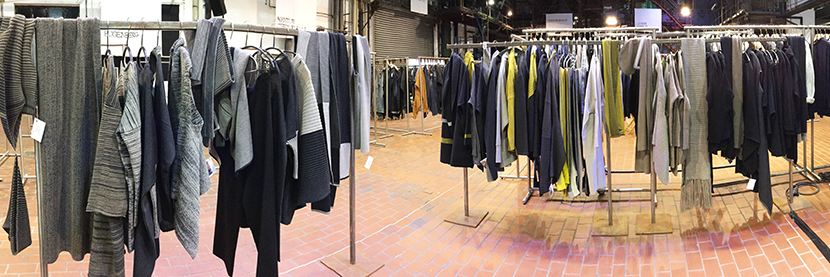Fashion from marine plastic
Do fashion and shoes made from "Ocean Plastic" show the way out of the global waste crisis?
Each of us would like to have clean oceans and finds "every kilo of plastic less in the sea as profit".
But the idea of making fashion from ocean waste is nonsense from a sustainability point of view, says sustainability researcher Kai Nebel, who heads the research focus on sustainability and recycling at Reutlingen University. Viola Wohlgemuth, Greenpeace consumer expert, thinks that "presenting products made of ocean plastic that cannot be recycled as ocean protection is simply greenwashing and consumer deception. It's worse than doing nothing, she says, because well-meaning consumers are made to feel they are contributing to environmental protection, when in fact they are buying the next generation of hazardous waste for a lot of money."
The waste fishermen from Nabu
The nature conservation association Nabu and Magdeburg-Stendal University of Applied Sciences have investigated whether ecologically useful and financially rewarding products can be made from marine litter. The nature conservation association has been running the project "Fishing for Litter" for over a decade. In the harbours on the North Sea and Baltic Sea, it places containers in which fishermen can dispose of the litter they have retrieved from the sea during their trips free of charge. More than 150 fisheries are taking part in the campaign, and almost 65 tonnes of rubbish have already been collected.
But while the collection campaign makes an important contribution to combating marine plastic in the North and Baltic Seas, the scientific analysis showed that recycling the waste as a raw material is hardly feasible in a meaningful way. Even the production of a granulate for the manufacture of the simplest plastics from the "wild mix" of marine plastics is only possible with extreme effort, summarises Nabu expert David Pfender. It costs 20,000 euros to process one tonne of waste so that it can be used as a raw material for plastic park benches, for example. "In practice, this is neither profitable nor ecologically sensible." The conservationists have drawn consequences: The plastic waste collected by the fishermen will be "thermally recycled" - i.e. incinerated.
Never seen the ocean.
In order to be able to declare their products as "Made from Ocean Plastics", producers often resort to plastic waste from PET bottles. These are not fished from the depths of the oceans, as pictures of sea turtles tangled in plastic might suggest. Rather, as manufacturers usually mention in an inconspicuous place, they are collected "in coastal regions" on land. Much of the ocean plastic is unlikely to have ever come into contact with the sea.
To produce less, but of higher quality.
"The basic problem is that too much is produced and thrown away. 40 % of clothing is produced to be thrown away because it is cheaper than producing less at a higher unit cost. The second scandal is that the fashion system is not recyclable.
We have to produce less and oblige companies to produce recyclable goods. Only things that can be recycled with the technical possibilities available on the market should be sold," says Viola Wohlgemuth, Greenpeace consumer expert. "The legislator is needed here, because without guidelines it won't work.
Her advice to consumers: "The most sustainable textile is the one that does not have to be made again. I can take responsibility for the resources in my wardrobe: Wear the unworn, repair the broken and if it doesn't fit anymore, don't put it in the bin but take it to the second-hand shop.
Conclusion:
The fashion industry needs a SLOW-Down. Everyone needs to consume less and the business sectors need to change into a circular economy. "We need to create more circular products, produce less and produce more value," say the experts. Business as usual is not the solution.
———
Source: Schrott & Korn

